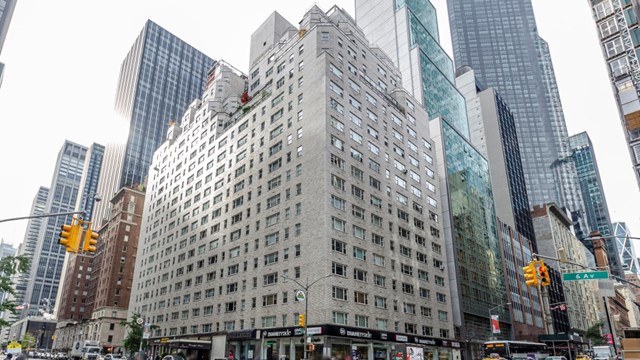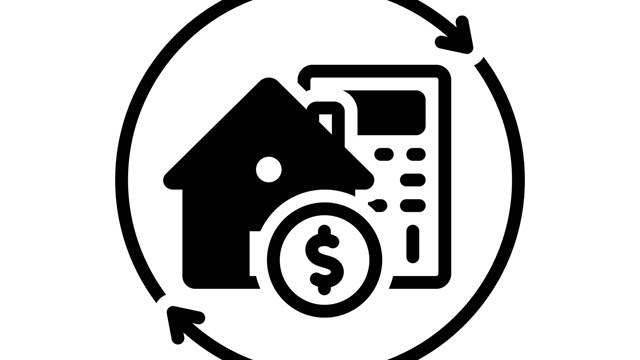In increasing numbers, residential developments constructed under New York's Mitchell-Lama housing program are considering the option to privatize - or "buy out" of the program - when they become eligible to do so. Understanding this trend and the ramifications of taking such an action are critical for any Mitchell-Lama property.
New York State's Mitchell-Lama Housing Program was created in 1955 when former Manhattan Senator MacNeil Mitchell and former Brooklyn Assemblyman Alfred Lama sponsored legislation to provide incentives for the construction of affordable housing for moderate income families. Under the program, a total of 269 rental and cooperative properties with an aggregate of more than 105,000 dwelling units were built, including such recognizable developments as Co-op City in the Bronx, Rochdale Village in Queens, and Trump Village in Brooklyn. Both Mitchell-Lama rental properties and co-ops were - and continue to be - supervised by either New York City or New York State housing authorities, notably the New York City Department of Housing Preservation and Development (HPD) and the New York State Department of Housing and Community Renewal (DHCR). This supervision provides guidance to the owners and boards of Mitchell-Lama developments on how the properties should be run.
Funding for the original construction of Mitchell-Lama developments was provided by either New York State, or New York City. This funding, which was financed by the sale of municipal bonds with low interest rates that corresponded to comparatively low rent or carrying charges, was complemented by real estate tax abatements. Over the years, the program has been supplemented by various low interest loans for capital improvements and further tax abatements.
Under the program, owners of Mitchell-Lama rental properties are limited to a fixed profit in the form of dividends. In Mitchell-Lama co-ops, apartments are particularly affordable, and shareholder profit on resale is limited to the original purchase price plus, in most cases, the shareholder's proportionate share of any mortgage amortization during the period of residency.
Of greatest significance to this inquiry is the fact that all Mitchell-Lama developments are eligible to withdraw from the program after 20 years upon prepayment of the mortgage, or after 35 years in the case of developments assisted by loans prior to May 1, 1959. Such withdrawal and privatization is called a buyout. When a Mitchell-Lama property privatizes through buyout, it is no longer subject to regulation by such agencies as HPD, DHCR, or Housing and Urban Development (HUD), and it is no longer required to be affordable for moderate income families.
Simply by the passage of time, an increasing number of Mitchell-Lama developments have become eligible for buyout since the early 1990s. Today, more and more of these properties are exploring the possibility of buyout and privatization in light of the currently strong real estate market. However, the prospect of buyout raises several red flags, and its advantages and disadvantages must be carefully weighed before a final, irrevocable decision is made.
The Mitchell-Lama Housing Program has been referred to as one of the most successful government-funded housing programs ever because it has provided affordable housing for almost 40 years. Yet despite its overall success, the program has not been without its challenges. As the program evolved, many owners and boards of Mitchell-Lama properties have had "˜wish lists' and/or faced problems, which are difficult to resolve because of the government supervision.
Many of these requests and issues have remained unresolved, and have almost universally worsened as the buildings have aged and as additional funding for capital replacement or improvements has been required, but not forthcoming. In some extreme cases - where the original construction was poor or substandard, for example - it would now require many millions of dollars to appropriately rehabilitate the development. This situation has been exacerbated by the advent of Local Laws 10 (1980) and 11 (1998), which require periodic exterior inspections and mandate certain repairs without exception. The expensive structural and restoration work that has been identified as necessary for many Mitchell-Lama developments comes at a time when neither New York State, nor especially New York City, has the resources to fund them.
Compounding the problems of aging exteriors and infrastructures, elevators, heating plants, and windows, is the fact that owners and boards of Mitchell-Lama developments are also faced with significantly increased operating expenses like higher energy costs and the skyrocketing cost of insurance coverage in the wake of 9/11. Fortunately for some Mitchell-Lama participants, interest rates have fallen to a degree where conventional financing is available for some of their critical rehabilitation work if other funds are not available through state programs, grants, or other subsidized funding. That said, however, conventional borrowing is not a viable solution for many Mitchell-Lama developments.
The challenges discussed above, and the general rising costs of housing in New York, are what prompt owners and boards of Mitchell-Lama developments to consider buyout for their properties. The advantages of buyout include independence in the governance and operation of the property, and the ability to increase rents and maintenance charges to market levels. In Mitchell-Lama co-ops, such privatization also permits shareholders to sell their apartments at market rates, allowing them to realize the potentially hefty profits from which they had been disqualified as Mitchell-Lama shareholders.
But the possibility of buyout also carries critical disadvantages. For example, in Mitchell-Lama rentals, the only one who stands to profit is the owner; the tenants who cannot afford to pay market rate rents will be out of luck - and out of a home. Similarly, in Mitchell-Lama co-ops, it is reasonable to project that a substantial number of the residents have fixed, moderate incomes, and therefore could not bear the increased costs of opting out of the program.
But why does buying out mean increased costs? There are a number of reasons. First of all, the original underlying, low-interest financing for the development will need to be refunded. This will result in necessarily higher operating costs and ultimately higher rents for renters and higher carrying charges for shareholders. Also, in properties where the original mortgage was modified, or provided for very little amortization, a substantial unpaid mortgage principal would have to be satisfied virtually immediately upon privatization.
Moreover, many Mitchell-Lama projects participated in HUD's "223F Program," which subsidized the underlying mortgage financing and allowed for deferred interest payments on a substantial portion of the underlying mortgage. In these cases, not only will the mortgage - or mortgages - have to be either negotiated downward or paid off, but all of the accrued and unpaid interest also will have to be paid. This would require a privatized development to pay off absolutely all its outstanding debt, and refinance with conventional loans, and would further require current payments on all debt, raising carrying charges even higher. While it is true that any funds currently existing at the development would likely remain, in most cases those funds are limited, and would likely be depleted just to initiate the buyout process in the first place.
Housing costs following buyout and privatization would go higher still as a result of the property's disqualification from the real estate tax exemptions that kept costs reasonable under Mitchell-Lama, and the constantly rising real estate tax assessments that were not required under the program. While it is true that any real estate increases would probably be phased in over time to defer some of the need for immediate increases in rent or maintenance, the owner or shareholders of the newly privatized property would face much higher real estate tax obligations than under Mitchell-Lama nevertheless.
What's more, the provision of the Mitchell-Lama program to allow for surcharges to tenants or shareholders whose incomes exceed a certain threshold also would be eliminated, putting yet a greater burden on those who could least afford it.
In most cases, the process of buyout and privatization is a long and arduous task. In a Mitchell-Lama co-op, it requires the consent of a majority of the shareholders - a difficult goal to achieve in light of the fact that most Mitchell-Lama shareholders bought into the development precisely because of its affordability. For those shareholders who vote against buyout in a Mitchell-Lama co-op headed for privatization, it may be necessary to obtain a private investor who will buy the apartment and agree to provide a lifetime of affordable housing for the dissenting shareholder. The co-op itself may face further financial burdens because of shareholders who buy apartments under privatization and then are not able to afford them comfortably.
Despite the foregoing, the potential for benefit does exist for Mitchell-Lama developments eligible for privatization through buyout. For example, in some cases after privatization, substantial resale fees are received when shareholders sell, or "flip" their apartments at prevailing market rates, thus offsetting some or much of the initial costs of buyout. But as indicated above, not everyone is going to want to sell his or her apartment, and it is unlikely that resale activity, no matter how vigorous, will cover the total cost of privatization.
Nor is every Mitchell-Lama development eligible for buyout. For example, certain types of financing for capital improvements in a Mitchell-Lama property may be accompanied by restrictions on withdrawal from the program.
For those Mitchell-Lama developments that are eligible, buyout and privatization requires the initial engagement and then constant stewardship of a knowledgeable professional team, including accountants, attorneys, appraisers, and engineers. Only through the guidance of these professionals can a board or owner plan properly for transition to privatization, execute the transition, and provide for future contingencies. The buyout plan to privatize a Mitchell-Lama rental or co-op development must be devised years before the actual event, if indeed privatization via buyout is what the owner or shareholders want, once all factors have been considered.







4 Comments
Leave a Comment